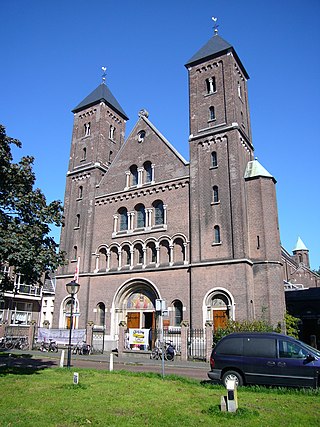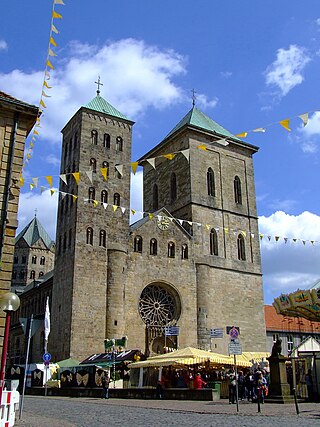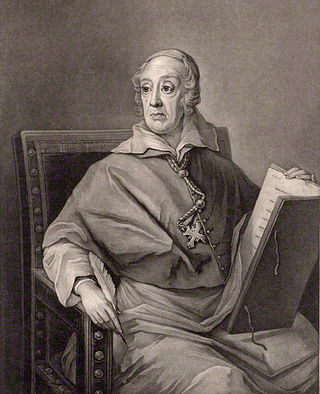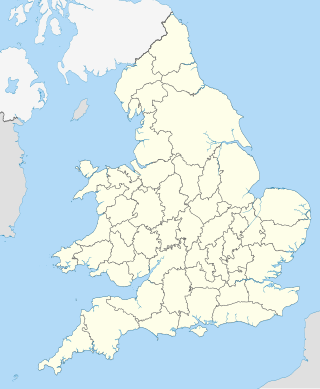
An episcopal polity is a hierarchical form of church governance in which the chief local authorities are called bishops. The word "bishop" here is derived via the British Latin and Vulgar Latin term *ebiscopus/*biscopus, from the Ancient Greek ἐπίσκοπος epískopos meaning "overseer". It is the structure used by many of the major Christian Churches and denominations, such as the Catholic, Eastern Orthodox, Oriental Orthodox, Church of the East, Anglican, Lutheran and Methodist churches or denominations, and other churches founded independently from these lineages.

The Old Catholic Church of the Netherlands, sometimes Jansenist Church of Holland, is an Old Catholic jurisdiction originating from the Archdiocese of Utrecht (695–1580). The Old Catholic Church of the Netherlands is the mother church of the Old Catholic Union of Utrecht.
The ecclesiastical title of archpriest or archpresbyter belongs to certain priests with supervisory duties over a number of parishes. The term is most often used in Eastern Orthodoxy and the Eastern Catholic Churches and may be somewhat analogous to a monsignor, vicar forane or dean in the Latin Church, but in the Eastern churches an archpriest wears an additional vestment and, typically, a pectoral cross, and becomes an archpriest via a liturgical ceremony.

The Diocese of Westminster is a Latin archdiocese of the Catholic Church in England. The diocese consists of most of London north of the River Thames and west of the River Lea, the borough of Spelthorne, and the county of Hertfordshire, which lies immediately to London's north.
The Holland Mission or Dutch Mission was the common name of a Catholic Church missionary district in the Low Countries from 1592 to 1853, during and after the Protestant Reformation in the Netherlands.

The Diocese of Osnabrück is a Latin Church ecclesiastical territory or diocese of the Catholic church in Germany. The diocese was originally founded circa 800. It should not be confused with the smaller Prince-Bishopric of Osnabrück–an ecclesiastical principality of the Holy Roman Empire until 1803–over which the bishop, as prince-bishop, exercised both temporal and spiritual authority.
The Apostolic Vicariate of the London District was an ecclesiastical jurisdiction of the Roman Catholic Church in England and Wales. It was led by a vicar apostolic who was a titular bishop. The apostolic vicariate was created in 1688 and was dissolved in 1850 and its former area was replaced by the episcopal sees of Westminster and Southwark.
The Apostolic Vicariate of the Midland District was an ecclesiastical jurisdiction of the Roman Catholic Church in England and Wales. It was led by an apostolic vicar who was a titular bishop. The Apostolic Vicariate of the Midland District was created in 1688 and changed its name to the Central District in 1840. It was dissolved in 1850 and was replaced by two dioceses.
The Apostolic Vicariate of the Northern District was an ecclesiastical jurisdiction of the Roman Catholic Church in England and Wales. It was led by a vicar apostolic who was a titular bishop. The Apostolic Vicariate of the Northern District was created in 1688 and dissolved in 1850 and was replaced by the Diocese of Hexham, which changed to the Diocese of Hexham and Newcastle in 1861.
The Apostolic Vicariate of the Western District was an ecclesiastical jurisdiction of the Roman Catholic Church in England and Wales. It was led by a vicar apostolic who was a titular bishop. The Apostolic Vicariate of the Western District was created in 1688 and was dissolved in 1850 and replaced by two dioceses.
The English College was a Catholic seminary in Douai, France, associated with the University of Douai. It was established in 1568, and was suppressed in 1793. It is known for a Bible translation referred to as the Douay–Rheims Bible. Of over 300 priests from Douai sent on the English mission, about one-third were executed. The dissolution of the college at the time of the French Revolution led to the founding of Crook Hall near Lanchester in County Durham, and St Edmund's College, Ware. It is popularly believed that the indemnification funds paid by the French for the seizure of Douai's property were diverted by the British commissioners to complete the furnishings of George IV's Royal Pavilion at Brighton.
William Bishop was the first Roman Catholic bishop in England after the Reformation, serving as Vicar Apostolic of England and titular Bishop of Chalcedon.
John Leyburn was an English Roman Catholic bishop who served as the Vicar Apostolic of England from 1685 to 1688 and then when it was divided served as the Vicar Apostolic of the London District from 1688 to 1702. He was not only a theologian, but also a mathematician, and an intimate friend of Descartes and Hobbes.

Bonaventure Giffard (1642–1734) was a Roman Catholic bishop who served as the Vicar Apostolic of the Midland District of England from 1687 to 1703 and Vicar Apostolic of the London District of England from 1703 to 1734.
A protopope, or protopresbyter, is a priest of higher rank in the Eastern Orthodox and the Byzantine Catholic Churches, generally corresponding to Western Christianity's archpriest or the Latin Church's dean.

The Diocese of Hexham and Newcastle is a Latin Church diocese of the Catholic Church, centred on St Mary's Cathedral in the city of Newcastle upon Tyne in England. The diocese is one of the six suffragan sees in the ecclesiastical Province of Liverpool and covers the historic boundaries of County Durham and Northumberland.
Precedence signifies the right to enjoy a prerogative of honor before other persons; for example, to have the most distinguished place in a procession, a ceremony, or an assembly, to have the right to express an opinion, cast a vote, or append a signature before others, to perform the most honorable offices.
This is a glossary of terms used within the Catholic Church. Some terms used in everyday English have a different meaning in the context of the Catholic faith, including brother, confession, confirmation, exemption, faithful, father, ordinary, religious, sister, venerable, and vow.
George Witham was an English Roman Catholic bishop who served as the Vicar Apostolic of the Midland District, and, later, as the Vicar Apostolic of the Northern District.

The Apostolic Vicariate of England (and Wales) was an ecclesiastical jurisdiction of the Roman Catholic Church in England and Wales. It was led by a vicar apostolic (or apostolic vicar) who was a titular bishop. The apostolic vicariate was created in 1623 and was divided into four districts in 1688.







